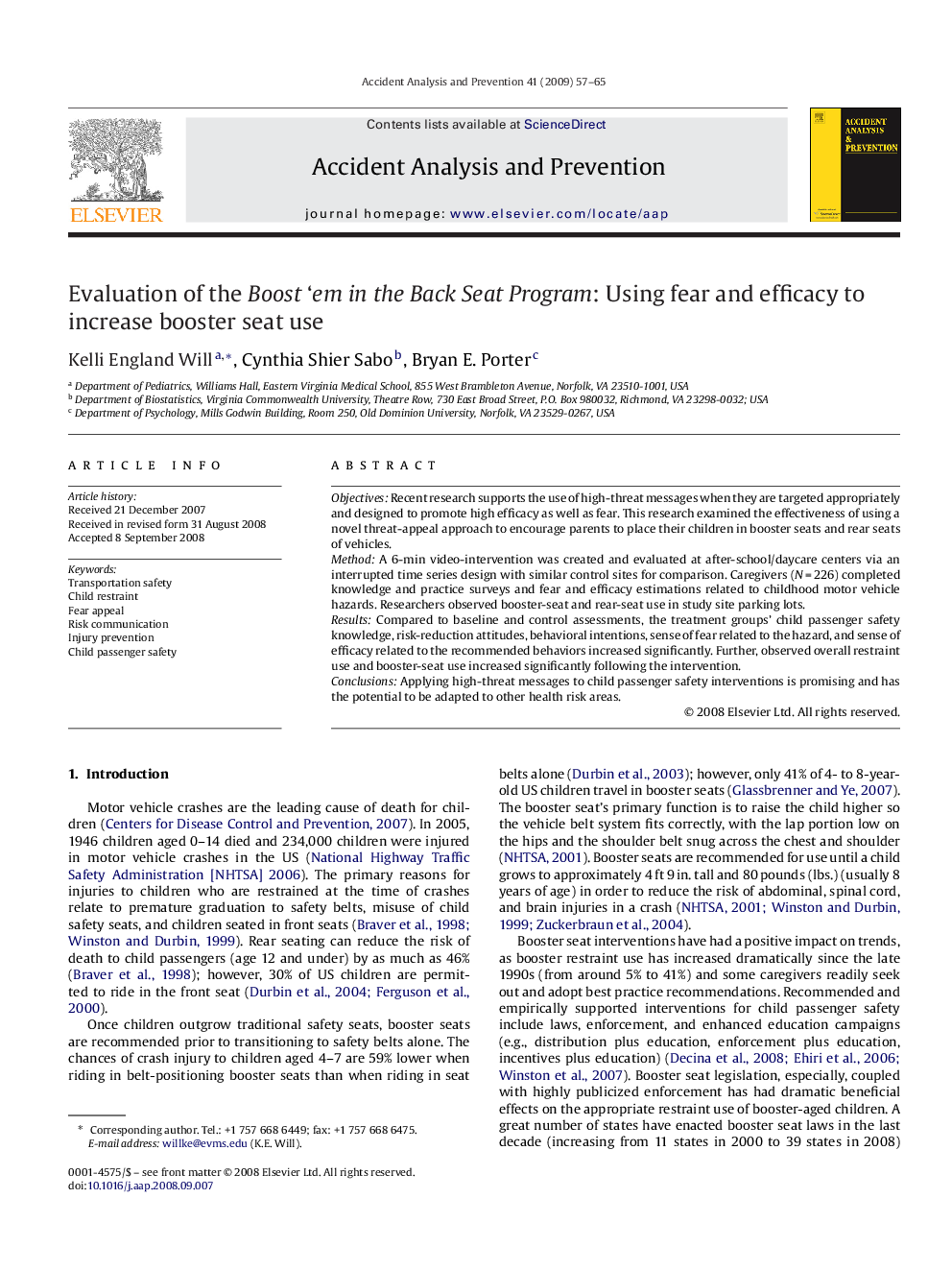| Article ID | Journal | Published Year | Pages | File Type |
|---|---|---|---|---|
| 573541 | Accident Analysis & Prevention | 2009 | 9 Pages |
ObjectivesRecent research supports the use of high-threat messages when they are targeted appropriately and designed to promote high efficacy as well as fear. This research examined the effectiveness of using a novel threat-appeal approach to encourage parents to place their children in booster seats and rear seats of vehicles.MethodA 6-min video-intervention was created and evaluated at after-school/daycare centers via an interrupted time series design with similar control sites for comparison. Caregivers (N = 226) completed knowledge and practice surveys and fear and efficacy estimations related to childhood motor vehicle hazards. Researchers observed booster-seat and rear-seat use in study site parking lots.ResultsCompared to baseline and control assessments, the treatment groups’ child passenger safety knowledge, risk-reduction attitudes, behavioral intentions, sense of fear related to the hazard, and sense of efficacy related to the recommended behaviors increased significantly. Further, observed overall restraint use and booster-seat use increased significantly following the intervention.ConclusionsApplying high-threat messages to child passenger safety interventions is promising and has the potential to be adapted to other health risk areas.
